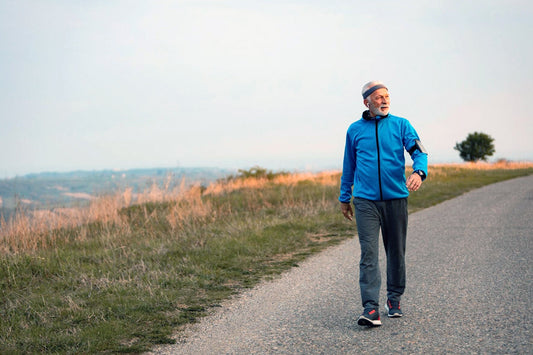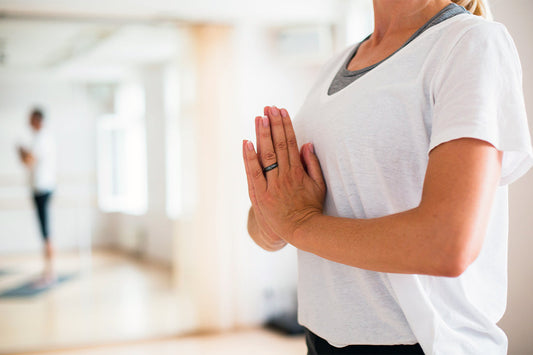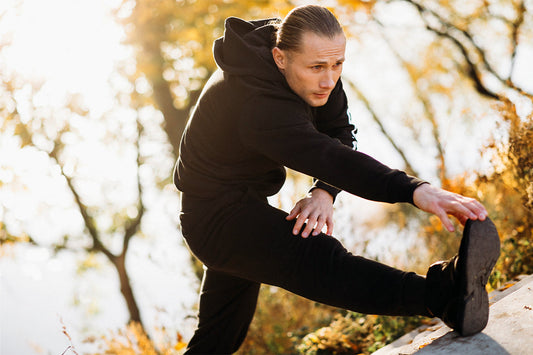You’ve probably been told to stretch before a workout. But what kind of stretching should you be doing? For years, static stretching was the go-to. That’s the kind where you hold a position for a while to stretch a muscle. But now, many fitness experts are recommending dynamic stretching—and for good reason.
Dynamic stretching uses active movement to warm up your muscles and joints through their full range of motion. Instead of holding still, you’re moving your body in ways that help it get ready for action. It’s great for preparing both the upper body and lower body, and it helps you feel more awake, more flexible, and ready to move.
In this blog, we’ll break down what dynamic stretching is, why it’s helpful, and how you can start doing it today—even if you’re a beginner.
What is Dynamic Stretching?
Dynamic stretching is a type of active stretching that involves controlled, repetitive movements. These stretches help prepare your body for physical activity by getting your muscles and joints moving and your circulation.
The key difference between dynamic and static stretching is that dynamic stretching involves movement. You don’t hold a position for long—instead, you’re constantly in motion, mimicking the types of activities you’re about to do.
For example, leg swings, arm circles, and walking lunges are all great dynamic stretches. They stretch your muscles in a gentle, rhythmic way while helping your joints move through their natural range.
Why Choose Dynamic Stretching?
Here are a few reasons to choose dynamic stretching, especially before a workout or physical activity:
- Warms Up the Body
Dynamic stretches help wake up your body. Movements like high knees or hip circles supports healthy heart rate, which helps you feel more energized.
- Prepares Your Muscles and Joints
These stretches help get your muscles and joints ready for the work ahead. They prepare your body by mimicking workout movements, which can help you move more smoothly and with better control.
Regular dynamic stretching can help maintain your range of motion and support balance. For example, when you stand on one leg while swinging the other, your body learns to stay steady even while in motion.
- Supports Better Posture
Many dynamic stretches focus on your hip flexors, shoulders, and spine. These areas tend to get tight from sitting too much. Regular movement helps you restore better posture and body awareness.
Key Dynamic Stretches You Can Do Standing
You don’t need a gym or fancy equipment to get started. Most dynamic stretches can be done from a standing position, right in your living room, hallway, or even outside.
Here are some easy ones to try:
- High Knees
- Stand tall and jog in place.
- Bring your knees up as high as you can toward your chest.
- Pump your arms as you move.
- Do this for about 30 seconds.
Benefits: Activates your hip flexors, strengthens your core, and helps wake up your lower body.
- Arm Circles
- Extend your arms straight out to your sides.
- Start making small circles, then gradually make them bigger.
- Do 10 circles forward, then 10 circles backward.
Benefits: Loosens up the shoulders and upper body while helping you move your joints through their full range of motion.
- Walking Lunges
- Step forward into a lunge position.
- Lower your body until both knees are bent at 90 degrees.
- Push through your front foot to bring your back leg forward into the next lunge.
- Do 10 lunges per leg.
Benefits: Works your quads, hamstrings, and glutes while supporting balance and mobility.
- Leg Swings
- Hold on to a wall or chair for support.
- Swing one leg forward and backward in a smooth motion.
- Do 10-15 swings, then switch legs.
Benefits: Helps loosen tight hamstrings and hip joints. Encourages a fuller range of motion.
- Hip Circles
- Stand with feet shoulder-width apart.
- Place your hands on your hips.
- Move your hips in a slow, wide circle clockwise, then counterclockwise.
- Do 10 circles each way.
Benefits: Gently wakes up the hip flexors and supports active movement in the core and pelvis.
- Arm Swings
- Stand tall and swing both arms forward and backward across your chest.
- Cross them in front of you, then open them wide.
- Do this for 20 seconds.
Benefits: Helps ease tightness in the shoulders and upper back.
- Standing One-Leg Balance with Knee Drive
- Stand on one leg.
- Bring the opposite knee up toward your chest.
- Hold for 2-3 seconds, then switch legs.
- Repeat 10 times on each side.
Benefits: Builds balance, strengthens the core, and stretches the legs gently.
How Long Should You Stretch?
Dynamic stretching sessions don’t need to be long. Aim for 5 to 10 minutes before any workout, or even as a quick wake-up routine in the morning.
Each movement should last around 20 to 30 seconds, or 10 to 15 reps per side. The goal is to move consistently and gently, not force your body into a deep stretch.
When to Do Dynamic Stretching
- Before a workout: Dynamic stretches help get your body ready for movement.
- In the morning: It’s a great way to loosen up after sleep.
- During a break: A quick routine during work breaks can refresh your energy.
- Before a walk or jog: Helps warm up your legs and hip flexors.
Final Thoughts
Dynamic stretching is a simple and effective way to help your body feel ready to move. Unlike static stretching, it keeps you active and engaged, making it perfect before workouts or even on rest days when your body feels stiff.
Start with a few basic movements like leg swings, arm circles, and walking lunges. Focus on form, don’t rush, and listen to how your body feels. Whether you’re getting ready to exercise or just trying to shake off morning stiffness, these active stretches can help your body move better and feel more awake.
It doesn’t take much time, but the difference you’ll feel—especially in your joints, hip flexors, and upper body—can be surprising. So, roll out of bed, get into a standing position, and give your body the movement it deserves.






